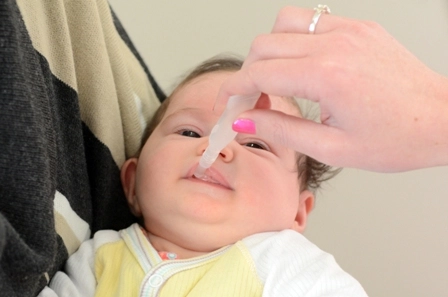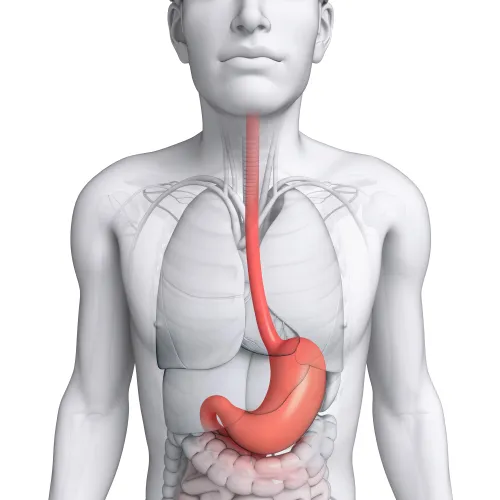ICD 10 Coding Alert
3 Pediatric ICD-10 Tips That You Probably Haven't Heard Before
With ICD-10 implementation just days away, nail down these strategies for clean claims.
You can expect payment delays of up to three months now that ICD-10 has kicked in — and if you don’t code correctly, that delay will be the least of your problems.
That was the word from Donelle Holle, RN, practice administrator with Fort Wayne Pediatrics and President of Peds Coding, Inc. during the Aug. 25 Codify webinar, “ICD-10 for Pediatrics.” Consider the following three tips that Holle shared during the one-hour training session.
1. Expect a 30-Day Hold If You Aren’t Specific
Carriers have already said that if you have an unspecified ICD-10 code that could be more specific (such as “otitis media, unspecified” versus “acute non-suppurative right otitis media without spontaneous rupture of membrane”), many payers will probably hold your claim for 30 days, Holle said. “This is a problem, because we in pediatrics are very used to using not so specific codes. We have to get better at doing that.”
The three biggest offenders when it comes to non-specific diagnosis coding are as follows, Holle said:
“We really have to try not to use non-specific codes for these diagnoses going forward,” Holle said. “CMS has stated that they will actually allow the non-specified code as long as you are close to the code family—but this is for Medicare. I want to make clear that this only applies to Medicare—this is not a grace period,” Holle stressed. “There isn’t another insurance company out there telling you this—not one. So you have to be very careful.”
The drop-down boxes on your electronic health records (EHR) should help you get more specificity with ICD-10. For instance, if you click “abdominal pain,” the options on the drop-down menu should include selections such as right upper quadrant, epigastric, generalized, etc. That way, it’s easy to select the diagnosis code from the information on the EHR record.
2. Multiply Your Diagnoses when Necessary
You need to get accustomed to using more than one diagnosis code as appropriate, Holle said. Even if a pediatrician has three or four diagnoses, many practices only report the main one — but going forward, that won’t be enough, she said.
For example, suppose a crying patient presents with severe abdominal pain. The patient is doubled over in pain, they’re pale, nauseated and they’ve vomited a few times. The diagnosis could be anything from a viral illness to an abdominal mass, so to find the cause, the doctor does a full workup and runs several lab tests, only to find that the patient is constipated. “You know what I usually see on the claim? Constipation as the diagnosis,” Holle said. “But constipation doesn’t in any way explain why this was a level four visit. However, vomiting, abdominal pain and constipation certainly would explain what’s going on. So we have to be a lot better at doing that diagnosis coding using more than one diagnosis as appropriate.”
The diagnoses have to be pertinent to the visit, of course, but if the symptoms and diagnoses are in the record, you should report them when applicable, Holle added.
If you perform both an office visit and a procedure on the same day, you should use separate diagnoses when you can, she said. “The reason is this: An insurance company gets your claim and says okay, here’s the visit, but on this visit with a 25 modifier we also have another service. If you use the same diagnosis for the visit and procedure, more than likely you’ll get a denial for one of them because the insurer will wonder why you’re doing two separate services for one diagnosis code. For instance you could report 99213-25 with the ICD-10 diagnosis of S90.461 (Insect bite [nonvenomous], right great toe) and 10060 (Incision and drainage of abscess [eg, carbuncle, suppurative hidradenitis, cutaneous or subcutaneous abscess, cyst, furuncle, or paronychia]; simple or single) linked to L03.031 (Cellulitis of right toe).
3. Z Codes Could Be Your Link to Payment
Under ICD-9, many pediatric coders could forego V codes because they’re under the impression that those codes aren’t payable. However, you should start using their ICD-10 counterparts, the Z codes, Holle said.
“They’re very important, because they might be able to help explain why a visit is being done, why labs and x-rays are being done, or why a visit is much more complex. When we don’t use V codes currently and Z codes in the future, we basically give away a lot of our care.”
Although these codes aren’t payable, they give the insurer the information it needs to pay your claim. The codes say, “I had to do this, it was important to do this, and here is why,” Holle said. For instance, suppose a patient has the symptoms of a urinary tract infection (UTI) and also has a personal congenital malformation of the genitourinary system that was previously repaired. It would be important to report the Z code indicating the personal history so the insurer would know why you performed a more comprehensive workup than what you would normally perform for a UTI.
In another example, a patient returns to the office for a recheck after a previous visit for an illness, and on the repeat visit you find that the patient didn’t finish all of his medication that the pediatrician had prescribed at the first visit because the parents are on a tight budget and wanted to save the leftover medication in case a sibling got the same sickness. In this case under ICD-10, you can report Z91.120 (Patients intentional underdosing of medication regimen due to financial hardship).
“When you put a code down like that, don’t you think it helps explain to the insurer that this visit is more complex?” Holle asked. “It’s going to require counseling. It’s going to require helping them get some financial aid to help pay for their medications.”
Expect Slow Payments at the Beginning
You may not be able to count on your current claims processing time frames after Oct. 1, medical societies say. With thousands of claims flowing through the insurers’ clearinghouses, glitches are expected to happen from time to time, which will slow down all of the claims in the pipeline.
“The AMA and CMS are both saying that they both expect claims to be held for anywhere up to three months — that is expected,” Holle said. “I am a bit of an optimist, so although I do believe we’ll have a shutdown of payments, I think it will last about four to six weeks.”
After that period, insurers should be able to get their systems moving more smoothly, and as time passes you should be able to watch claims process faster.
Related Articles
ICD 10 Coding Alert
- News You Can Use:
Did You Follow These ICD-10 Essential Tips Implementation Tips? Find Out
Embrace more combination codes and seventh digits. By now, you should have transitioned from ICD-9 [...] - Home Health:
Watch for New Seventh Character Guidelines
Last minute update could mean denials. While much of the logic in the ICD-10 code [...] - CMS:
Using Our Free Billing Software Doesn't Excuse You From ICD-10
Check the CMS website to ensure you qualify for a waiver. If your claim submission [...] - Diagnosis Spotlight:
3 Pediatric ICD-10 Tips That You Probably Haven't Heard Before
With ICD-10 implementation just days away, nail down these strategies for clean claims. You can [...] - Otolaryngology:
Report a More Detailed Diagnosis for Acute Swimmer's Ear
Your providers will need to document laterality beginning in October. With warm weather approaching, your [...] - Psychiatry:
Shift Focus to F48.2 For Reporting Pseudobulbar Affect in ICD-10
Hint: Don’t forget to report associated neurological or traumatic brain injury first. If your clinician’s [...] - Pathology/Lab:
Distinguish 3 Forms of Trisomy 21
Focus on cytogenetic test results. Just one code (758.0, Down’s syndrome) won’t cut it anymore to [...] - Reader Question:
Use "Other" ICD-10 Codes With Caution
Question: If I find that a common ICD-9 code that I use doesn’t have a direct [...] - Reader Question:
Confirm Structure Affected In Neck Sprain
Question: Which are the best ICD-10 codes do you report for sprain in cervical region?
[...]




